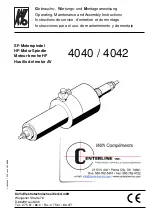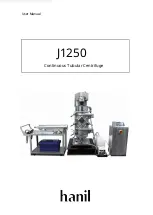
TG0007A
C. E. Niehoff & Co.
BRUSHLESS ALTERNATORS
1.
Inspect charging system components
Inspect charging system components
Inspect charging system components
Inspect charging system components
Inspect charging system components
for damage
for damage
for damage
for damage
for damage
Check connections at B– cable, B+ cable, and
regulator harness. Repair or replace any dam-
aged component before troubleshooting.
2.
Inspect vehicle battery connections
Inspect vehicle battery connections
Inspect vehicle battery connections
Inspect vehicle battery connections
Inspect vehicle battery connections
Connections must be clean and tight.
3.
Determine battery voltage and state of charge
Determine battery voltage and state of charge
Determine battery voltage and state of charge
Determine battery voltage and state of charge
Determine battery voltage and state of charge
If batteries are discharged, recharge or replace
batteries as necessary. Electrical system cannot
be properly tested unless batteries are charged
95% or higher.
4.
Determine if battery isolator is used
Determine if battery isolator is used
Determine if battery isolator is used
Determine if battery isolator is used
Determine if battery isolator is used in
in
in
in
in
charging circuit
charging circuit
charging circuit
charging circuit
charging circuit
Check vehicle wiring diagram. If so, you must
jumper out isolator before troubleshooting. See
Chart 1 on page 4 for details.
5.
Connect meters to alternator
Connect meters to alternator
Connect meters to alternator
Connect meters to alternator
Connect meters to alternator
Connect red lead of DMM to alternator B+
terminal and black lead to alternator B–
terminal. Clamp inductive ammeter on B+ cable.
6.
Operate vehicle
Operate vehicle
Operate vehicle
Operate vehicle
Operate vehicle
Observe charge voltage.
If voltage is at or below regulator setpoint, let
charging system operate for several minutes to
normalize operating temperature.
7.
Observe charge volts and amps
Observe charge volts and amps
Observe charge volts and amps
Observe charge volts and amps
Observe charge volts and amps
Charge voltage should increase and charge amps
should decrease. If charge voltage does not
increase within ten minutes, continue to next
step.
8.
Battery
Battery
Battery
Battery
Battery
is considered fully charged if charge
voltage is at regulator setpoint and charge amps
remain at lowest value for 10 minutes.
9.
If charging system
If charging system
If charging system
If charging system
If charging system
is not performing properly,
go to Chart 1, page 4.
Check: loose drive belt; low
battery state of charge.
Check: current load on
system is greater than
alternator can produce.
Check: defective wiring or
poor ground path; low
regulator setpoint.
Check: defective alternator
and/or regulator.
Check: wrong regulator.
Check: high regulator set-
point.
Check: defective regulator.
Check: alternator.
Check: broken drive belt.
Check: battery voltage at
alternator output terminal.
Check: defective alternator
and/or regulator.
Low Voltage Output
High Voltage Output
No Voltage Output
Check condition of items in Table 1 and correct if
necessary.
•
Digital Multimeter (DMM)
•
Ammeter (digital, inductive)
•
CEN Regulator Bypass Adapter A10-129
•
Jumper wire
•
12 V test light
Complete the following for proper troubleshooting:
Alternator model number ______________________
Regulator model number _______________________
Setpoints listed on regulator ___________________
R
Section 2: Basic Troubleshooting
Page 3
TG7B

























